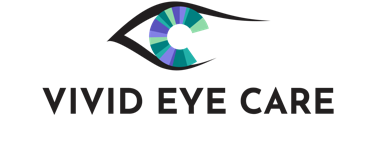Eyesight is one of our most precious senses. Yet, for millions of Canadians, refractive errors like presbyopia, hyperopia, and myopia make seeing the world clearly a daily challenge.
Presbyopia, hyperopia, and myopia each affect your vision differently by changing how light focuses on the retina. Myopia affects your distance vision, while presbyopia and hyperopia cause issues with your near vision.
Understanding the differences between these conditions is important for managing your eye health. After examining your eyes, your eye doctor can determine which refractive error (or errors) is affecting your vision. They can provide tailored advice on what type of correction or management strategies you should use.
What Is Presbyopia?
Presbyopia is a natural part of aging that impacts nearly everyone. The vision changes caused by presbyopia often become noticeable in your early 40s. You may notice that it’s harder to read a menu or see your phone’s screen clearly without holding it at arm’s length. This condition occurs when the lens inside your eye loses its flexibility, making it difficult to focus on close objects.
Symptoms of Presbyopia
The hallmark symptom is blurry vision when viewing items up close. People may also experience:
- Needing to hold things—like books or magazines—further away
- Difficulty seeing in low-light settings
- Eye fatigue or headaches after activities that require focusing up close
Correcting Presbyopia
The good news is that presbyopia is manageable. Common solutions include:
- Reading glasses
- Bifocal or progressive prescription lenses
- Multifocal contact lenses
What Is Hyperopia?
Hyperopia, also known as farsightedness, is a condition where distant objects appear clearer than nearby ones. An eyeball that’s too short or a cornea lacking sufficient curvature causes this refractive error. These physical changes in the eye affect how light focuses on the retina. Unlike presbyopia, hyperopia can occur at any age, even in childhood.
Symptoms of Hyperopia
Common signs include blurry vision up close, but other symptoms of farsightedness include:
- Trouble focusing on up-close tasks
- Strained eyes when focusing on nearby objects
- Trouble seeing at night
- Double vision when reading
- Dull pain in the eye
Treatment Options for Hyperopia
Corrective eyeglasses or contact lenses are the easiest solutions for hyperopia. Refractive surgeries like LASIK can be effective options for many. Plus, starting healthy vision habits young—like limiting digital screen use—can make a difference.

What Is Myopia?
Myopia is the exact opposite of hyperopia. This refractive error, also known as nearsightedness, causes close things to appear clear, while distant objects are blurry. Myopia is often hereditary and develops in childhood, typically stabilizing in early adulthood. Researchers estimate that myopia currently affects 30% and will affect 50% of the global population by 2050, making myopia the most common refractive error.
Symptoms of Myopia
People with myopia often squint to see far-away objects. Other myopia symptoms include:
- Headaches
- Eye strain
- Eye fatigue when focusing on distant objects
- Poor school performance
- Short attention span (often a child-specific symptom)
Managing Myopia
If left untreated or unmanaged, myopia can become severe, in which case it can cause potential complications later in life.
Eyeglasses and contact lenses are popular solutions for myopia. Single-vision lenses correct the error but don’t stop its progression. For children, there are several specialized myopia control lenses that eye doctors can recommend. These special lenses can slow down the progression of myopia.
Surgical procedures like LASIK or SMILE are additional options for correcting myopia in adults.
Your Optometrist can provide the best guidance for you or your child.
Key Differences & Overlaps Between Presbyopia, Hyperopia, & Myopia
At first glance, presbyopia, hyperopia, and myopia might seem confusingly similar. After all, they all involve vision challenges. But each condition is unique in how it manifests and progresses.
- Age of onset: Presbyopia typically develops after age 40, while myopia and hyperopia can occur at any age.
- Focus challenges: Presbyopia and hyperopia make it harder to focus on nearby objects, while myopia affects distant vision.
- Causes: Myopia and hyperopia are caused by structural abnormalities of the eye, whereas presbyopia results from natural lens aging.
Some people may experience more than one condition at a time. For example, someone could have presbyopia and mild myopia, which may require specialized multifocal lenses in order to manage their vision needs.
Why Regular Eye Exams Are Essential
Eye exams are about more than determining if you need glasses—they’re a vital part of your overall health and wellness. Optometrists can detect refractive errors and other eye conditions early on and offer solutions tailored to your needs before symptoms worsen. Benefits of regular eye exams include:
- Early detection means treating conditions before they impact your quality of life
- Certain eye conditions, like myopia in children, are more manageable with early intervention
- A comprehensive eye check-up can reveal signs of other health issues, like diabetes or high blood pressure
Take Charge of Your Vision
Understanding these refractive errors is essential to maintaining good eye health and vision. Even though they’re common, these vision-changing refractive errors are manageable with the right treatments and care routine. Whether it’s reading glasses, customized lenses, or surgical corrections, solutions exist for nearly every vision problem.
Contact our team at Vivid Eye Care to schedule an eye exam and gain clarity about your visual needs. One of our expert eye doctors can examine your eyes and offer tailored advice on getting clear vision.






















